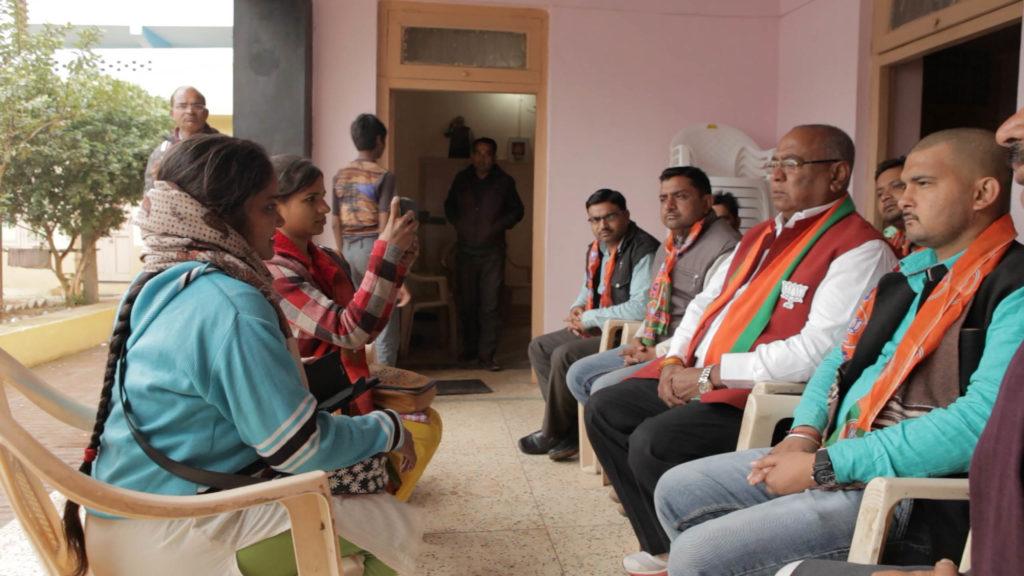Writing With Fire

Rintu Thomas' and Sushmit Ghosh's WRITING WITH FIRE. Image courtesy Sundance Institute.
The documentary opens with an inquiry into the rape of of a woman, Rampal Yadav. The indifferent officer at the station says he’s not aware of the case. “Being a journalist gives me the power to fight this injustice,” asserts Kavita Devi, editor of Khabar Lahariya, a pro-women’s rights newsletter based in the northern Indian state of Uttar Pradesh.
Founded by Devi and her childhood friend Meera Jatav in 2002, Khabar Lahariya has been the voice of resistance to the rising Indian populist movement of the Bharatiya Janati Party, led by the recently re-elected Prime Minister Narendra Modi. The paper is managed and staffed entirely by Dalit women. The lowest caste of Hindu society, Dalits remain discriminated against for educational and economic opportunities.
Directed by Sushmit Ghosh and Rintu Thomas, WRITING WITH FIRE is the second Indian film at Sundance that invokes the “f” word in the title. Some of this is, perhaps, an homage to Deepa Mehta’s Elements trilogy, beginning with FIRE in 1996, which sparked controversy in the conservative nation for its themes of homosexuality and homosexual equality in a patriarchal culture.
As the staff’s families express skepticism in the success of their labors, the newsletter’s YouTube channel surpasses 1 million views, then 10 million, eventually reaching 151 million views by the time the film was made. Contrary to the popular portrayals of Indian culture by Western media, the women of Khabar Lahariya are forward thinkers.
They discuss the shift to digital, and the need to stay ahead of the curve by leveraging social media to compete with the simplistic and sensationalistic angles popular in politics coverage. Editors in the group teach the younger journalists everything to know about research, writing, editing, editorializing, how to find an angle for a story, how to pitch ideas, and so on.
But the 2017 murder of fellow journalist Gauri Lankesh underscores the risk these women face. Since 2014, at least forty journalists have been murdered by Hindu nationalists who see the press as meddlers. Still, the women push on, focusing their sights on a young Modi protégé leading the Hindu YUVA (Youth for Unity, Virtues, and Action) movement. Full of ambition as well as himself, he spearheads a project to build a cow shelter, rather than housing for the impoverished in his community.
“This cow shelter will be the stepping stone to my future political ambitons,” he candidly admits. The women see through him, one warning, “The symbolism of the cow is a distraction for this government’s corrupt politics.”
A populist distraction we in America know all too well.